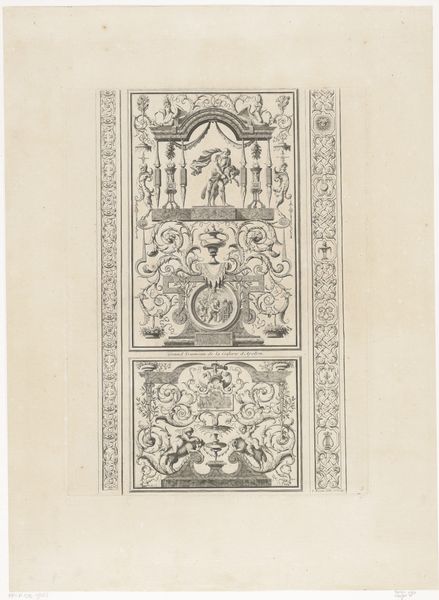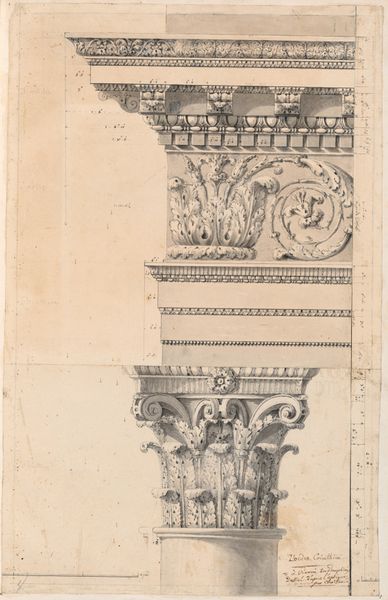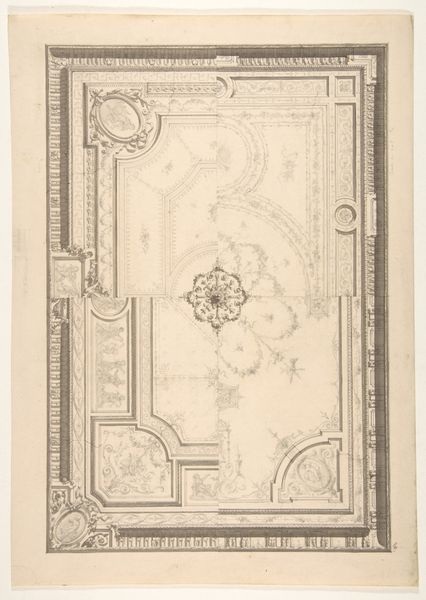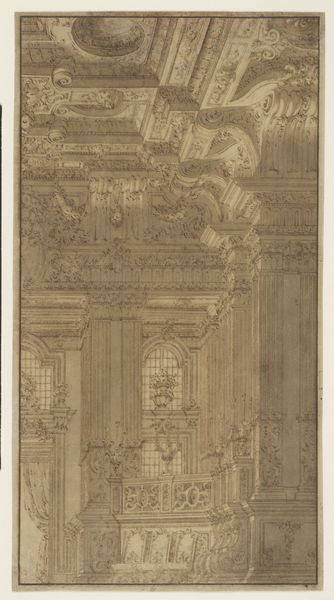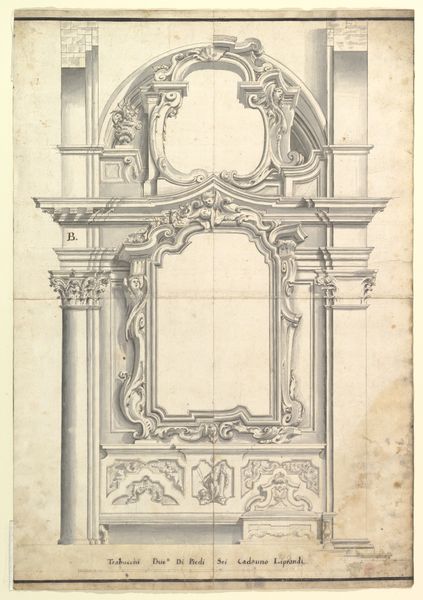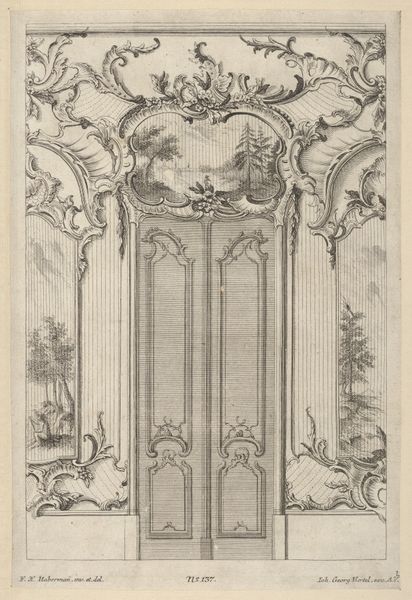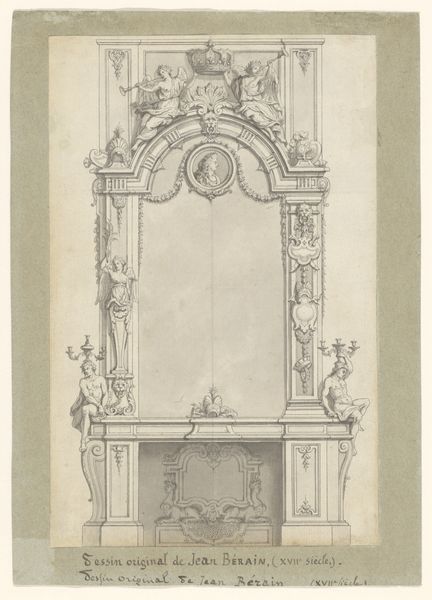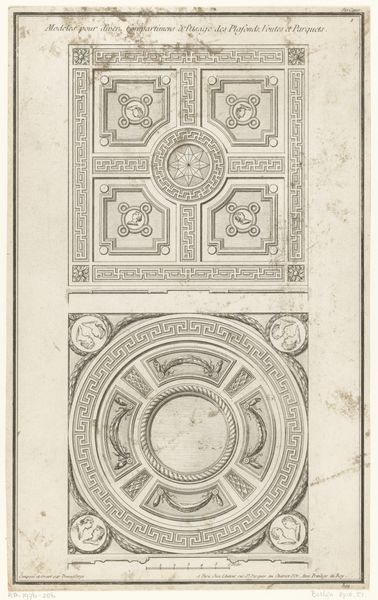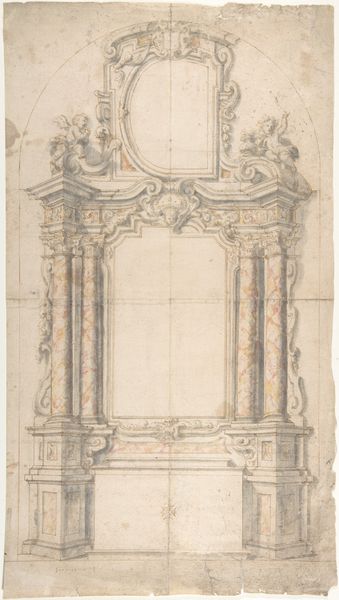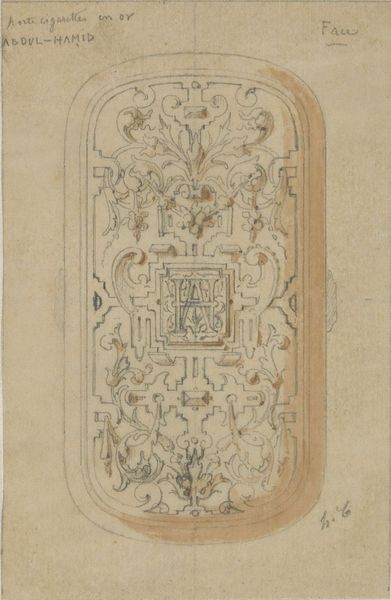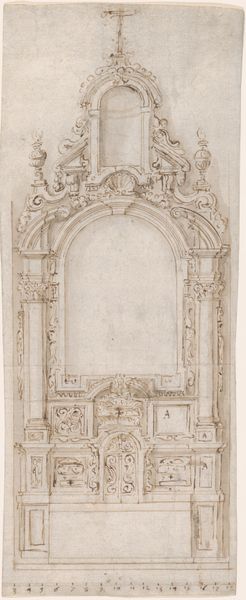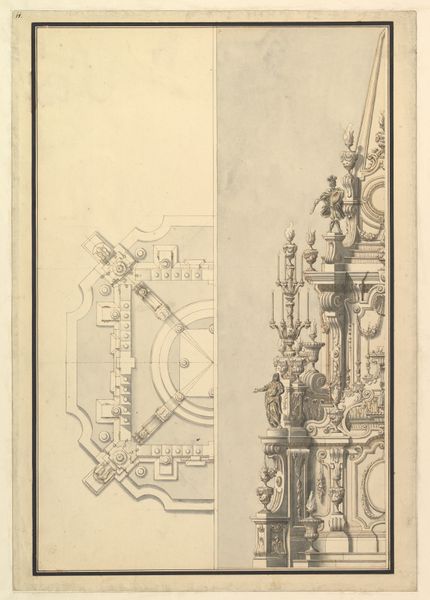
Design for the Wrought-Iron Entrance Grille of a Chapel 1700 - 1720
0:00
0:00
drawing, ink
#
drawing
#
baroque
#
form
#
ink
#
geometric
#
line
#
decorative-art
Dimensions: 23 13/16 x 11 1/16 in. (60.5 x 28.1 cm)
Copyright: Public Domain
Curator: What strikes me immediately is the sheer craftsmanship embedded within this design. Editor: You're right. The baroque ornamentation is dizzying. There's something quite imposing about the elaborate crests and weaponry that suggest an old and deeply hierarchical social order. Curator: Precisely! And understanding its original function offers a profound insight. This is a "Design for the Wrought-Iron Entrance Grille of a Chapel," attributed to Gilles-Marie Oppenord, dating roughly between 1700 and 1720. The material realization of wrought iron against its intended location and era is significant; think of the labor of extraction, refinement and application within a place as deeply tied with spiritual ideology as a chapel. Editor: I hadn't considered that, but of course, it speaks volumes. Beyond just the craft, it reveals how even architectural details become embodiments of power and privilege. Who would have commissioned such a grandiose entrance, and what messages were they hoping to convey? What kinds of restrictions were placed by such design and structure? Curator: The intended iron medium reinforces these themes of restriction and order through material solidity. It demands we examine how spaces like chapels used constructed barriers for crowd management along gendered, classed, and racialized parameters. The design offers geometric containment, a space intentionally delimited for specific users. Editor: So true. This isn’t simply a pretty drawing, is it? This elaborate design, etched in ink, forces us to ask questions. What ideas did it physically barricade? Which ones did it let through? Who made the design, and what kinds of restrictions may have bound their expression to fit rigid orthodoxies? Curator: Ultimately, that interplay between creative production and ideological control reveals not just Oppenord's technical skills but also illuminates dynamics about materials, labour, and structural authority of its historical moment. Editor: Yes, and to understand objects of beauty in terms of labour, of restrictions, of privilege, forces us to examine the role and presence of gatekeepers themselves, and question these constructions both materially and metaphorically.
Comments
No comments
Be the first to comment and join the conversation on the ultimate creative platform.
